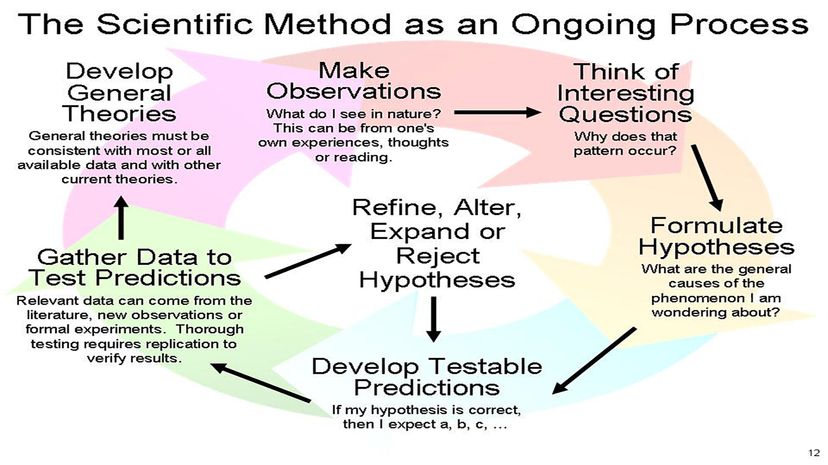Scientific Method Steps

As more proof that there is no one way to "do" science, different sources describe the steps of the scientific method in different ways. Some list three steps, some four and some five. Fundamentally, however, they incorporate the same concepts and principles.
For our purposes, we're going to say that there are five key steps in the method.
Advertisement
Step 1: Make Observations
Almost all scientific inquiry begins with an observation that piques curiosity or raises a question. For example, when Charles Darwin (1809-1882) visited the Galapagos Islands (located in the Pacific Ocean, 590 miles (950 kilometers) west of Ecuador, he observed several species of finches, each uniquely adapted to a very specific habitat. In particular, the beaks of the finches were quite variable and seemed to play important roles in how the birds obtained food.
These birds captivated Darwin. He wanted to understand the forces that allowed so many different varieties of finch to coexist successfully in such a small geographic area. His observations caused him to wonder, and his wonderment led him to ask a question that could be tested.
Step 2: Ask Questions
The purpose of the question is to narrow the focus of the inquiry, to identify the problem in specific terms. The question Darwin might have asked after seeing so many different finches was something like this: What caused the diversification of finches on the Galapagos Islands?
Here are some other scientific questions:
- What causes the roots of a plant to grow downward and the stem to grow upward?
- What brand of mouthwash kills the most germs?
- Which car body shape reduces air resistance most effectively?
- What causes coral bleaching?
- Does green tea reduce the effects of oxidation?
- What type of building material absorbs the most sound?
Coming up with scientific questions isn't difficult and doesn't require training as a scientist. If you've ever been curious about something, if you've ever wanted to know what caused something to happen, then you've probably already asked a question that could launch a scientific investigation.
Step 3: Formulate a Hypothesis
The great thing about a question is that it yearns for an answer, and the next step in the scientific method is to suggest a possible answer in the form of a hypothesis. A hypothesis is often defined as an educated guess because it is almost always informed by what you already know about a topic. For example, if you wanted to study the air-resistance problem stated above, you might already have an intuitive sense that a car shaped like a bird would reduce air resistance more effectively than a car shaped like a box. You could use that intuition to help formulate your hypothesis.
Generally, a hypothesis is stated as an "if ... then" statement. In making such a statement, scientists engage in deductive reasoning, which is the opposite of inductive reasoning. Deduction requires movement in logic from the general to the specific. Here's an example: If a car's body profile is related to the amount of air resistance it produces (general statement), then a car designed like the body of a bird will be more aerodynamic and reduce air resistance more than a car designed like a box (specific statement).
Notice that there are two important qualities about a hypothesis expressed as an "if ... then" statement. First, it is testable; an experiment could be set up to test the validity of the statement. Second, it is falsifiable; an experiment could be devised that might reveal that such an idea is not true. If these two qualities are not met, then the question being asked cannot be addressed using the scientific method.